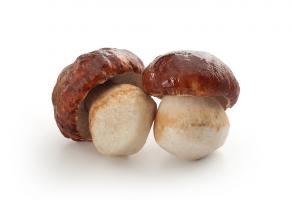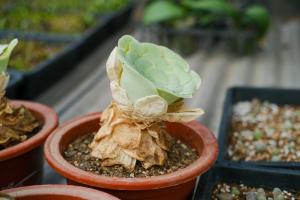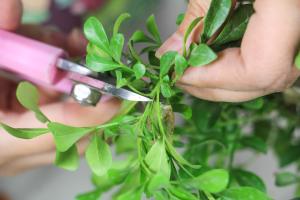Introduction
If you're planning on planting flowers in your garden, it's important to make sure there aren't any tree roots in the way. Tree roots can cause damage to your flowerbed, compete for nutrients and moisture, and even kill your plants. In this article, we'll cover the different methods you can use to remove tree roots from the ground so you can plant your garden without any interference.
Tools you'll need
Before you begin removing tree roots from the ground, you'll need a few tools. These may include a shovel, a root saw, loppers, a garden hose, a root barrier, and a stump grinder. Depending on the thickness and location of the roots, you may not need all of these tools, but it's good to have them on hand just in case.
Digging up the roots
If the roots you're dealing with are relatively shallow, you can remove them by digging them up. First, identify the area where the tree roots are coming from, and dig around the perimeter of that area using a shovel. Be sure to dig deep enough to expose the roots, and angle the shovel toward the tree to avoid damaging the root system.
Once you've exposed the roots, use loppers or a root saw to cut them into smaller pieces. Then, grab onto the root chunk and pull it out of the ground. If the root is too thick to pull out by hand, you can use a stump grinder to break it down further.
Killing the roots
If the roots are too deep to dig up, or you're dealing with a large root system, you may need to kill the roots using chemicals. One effective method is to pour boiling water over the roots to kill them. Alternatively, you can use a root-killing herbicide, such as glyphosate or triclopyr. Be sure to follow the instructions on the package and wear protective gear while handling chemicals.
Protecting your flowerbed
Once you've removed the tree roots from the ground, it's important to protect your flowerbed from any potential regrowth. This can be done by installing a root barrier around the perimeter of your garden. Root barriers are made of materials that will prevent roots from penetrating into the soil of your flowerbed.
You can also try planting your flowers in raised beds or containers, which will keep them separate from any remaining tree roots in the ground. This can be a great option if you don't want to deal with the hassle of removing all of the roots.
Conclusion
Removing tree roots from the ground is an important step in planting a successful flower garden. Whether you choose to dig up the roots manually or use chemicals to kill them, be sure to protect your flowerbed from any potential regrowth. With a little bit of effort, you can enjoy a beautiful and healthy garden that's free from tree root interference.

 how many times do yo...
how many times do yo... how many planted tre...
how many planted tre... how many pine trees ...
how many pine trees ... how many pecan trees...
how many pecan trees... how many plants comp...
how many plants comp... how many plants can ...
how many plants can ... how many plants and ...
how many plants and ... how many pepper plan...
how many pepper plan...































